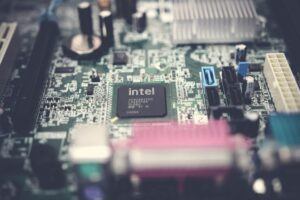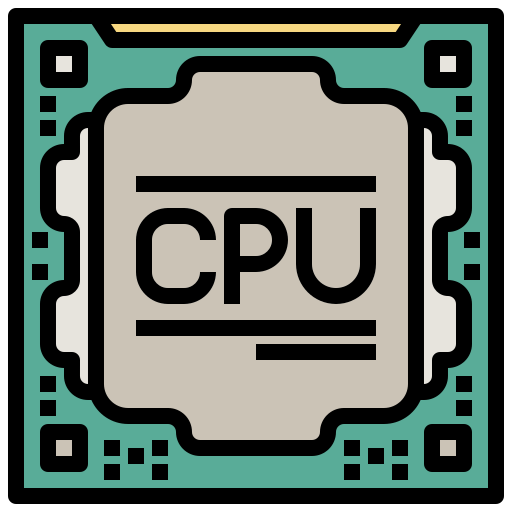Yes, you can do so but in a moderate manner though, plus, follow the right guide, overclock can make your computer perform better if you do it in the right way.
You’ll want to overclock through BIOS if you want maximum control over the process. This article will bring you through the entire process, from benchmarking and altering settings to monitoring your system.
BIOS is the software that loads before your operating system on your motherboard. It provides an interface for configuring the components installed on your motherboard.
Because the BIOS allows you to adjust parameters such as voltages and frequencies, you can use it to manually overclock your CPU to get a higher clock speed and potentially more excellent performance.
If you’re reading this, it’s assumed that you’re already familiar with the basics of overclocking. This overclocking primer is an excellent place to start if you’re new to overclocking and want to brush up on the basics.
Before overclocking Your CPU, Consider these first?
Before attempting BIOS overclocking, consider software tools that make the process easier. Intel Extreme Tuning Utility (Intel® XTU) offers an easy-to-use choice for those new to overclocking.
Intel Performance Maximizer, which you can read about in full here, is an even easier automated solution that will work with the latest Intel CoreTM CPUs. Before you begin, be sure you update your BIOS to the most recent version.
It will allow you to take advantage of any new features or fixes offered by the motherboard maker. To determine how to upgrade your BIOS properly, search for your motherboard online or study the necessary literature.
Monitoring System Vitals
When overclocking, you should keep a close eye on your system because changes to the power provided to your hardware might affect operating temperature.
Because the BIOS provides few choices for system monitoring, employing software that runs from Windows is a better bet.
Intel® XTU includes a full array of system monitoring tools and other options, such as CPU-Z, CoreTemp, HWiNFO32, and others.
Let’s begin by benchmarking your system now that you understand the settings you’ll be tweaking.
- Establishing Baseline Performance
- Adjusting Performance Settings
- Measuring Performance Gains
- Stress Test
(1) Establishing Baseline Performance
The first step in the overclocking procedure is to use benchmarking software to determine your system’s baseline performance.
It allows quick comparisons to the performance measurements after the overclock, highlighting any gains. Because you can’t run a benchmark program from BIOS, you’ll need to use a Windows-based benchmarking utility.

Many ways exist for benchmarking your hardware, including the Intel® Extreme Tuning Utility software.
We’ve included a couple more in our comprehensive guide to overclocking here.
Once you’ve determined your benchmark score, please keep track of it so you may compare it to the latest scores and see the results of your efforts.
(2) Adjusting Performance Settings
Because every BIOS and hardware configuration is unique, the location of your settings may differ. However, the fundamentals of overclocking are consistent across computers.
The first variable you’ll want to tweak is the CPU Core Ratio, which is one of the factors that affect the CPU’s final speed.
Locate the part of your BIOS where you can change this setting. If the boot is successful, repeat the benchmark and see if your score has increased from your starting point.
If the computer does not restart or crashes after applying your new CPU Core Ratio settings, return to BIOS and restore the last known viable settings.
In addition to increasing the core ratio, you may need to adjust the voltage supplied to the CPU if the system isn’t stable after restarting.
This setting, which should be near your BIOS’s CPU Core Ratio settings, is commonly referred to as CPU voltage or Vcore.
Changing the voltage can assist ensure that the CPU has the power to perform at higher Core Ratio rates. Greater frequencies necessitate more management, which may require higher voltages.
When increasing the CPU core voltage, keep in mind that any more power flowing through the CPU will affect its temperature output.
It is critical in all instances to locate the lowest stable voltage, thus only increasing your voltage progressively by +0.05 V at a time. Then, apply and test until you discover a setting combination that works for you.
You can also tweak built-in safeguards from the BIOS. While altering these settings can be helpful when attempting to overclock, only do so if you are confident in your abilities.
The precautions are in place because tampering with them can potentially destroy your hardware.
- If your system becomes unstable, such as not turning back on or freezing, see this section on maintaining system stability for subsequent measures.
- After testing, proceed to the next step when you’ve obtained the desired results from your benchmark and discovered that your system restarts without issue.
(3) Measuring Performance Gains
Run the same benchmark to determine your system’s baseline score to check the performance increases from your overclock.
Then compare the outcomes. If the number increases, you have successfully boosted the CPU’s performance. You have two choices from here.
- If you are pleased with the performance improvement, you can proceed to ensure system stability.
- If your modifications do not improve performance, return to the BIOS and tweak your settings until you achieve the desired results.
Related Article:
(4) Stress Test
A benchmark score indicates the measured performance of a system over a brief period. Stress testing your CPU’s higher frequency is vital for ensuring system stability over extended periods or more heavy workloads.
There are various software alternatives for doing stability tests.
Choose the one most closely resembles how you intend to use your system.
Final Thought
If you followed the instructions above for BIOS overclocking, the result should be a stable system with a faster CPU. If you’ve completed your stress test and the system is steady, you’re finished. Congratulations!
It’s still a good idea to check your settings regularly to ensure your CPU is functioning at the proper temperatures, significantly if you change or replace any of your other hardware. Most importantly, enjoy your new overclock and the benefits a quicker CPU may provide.
Reports

